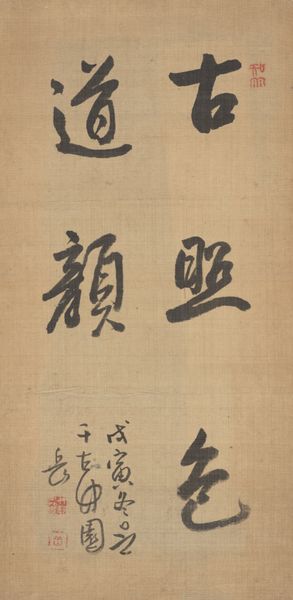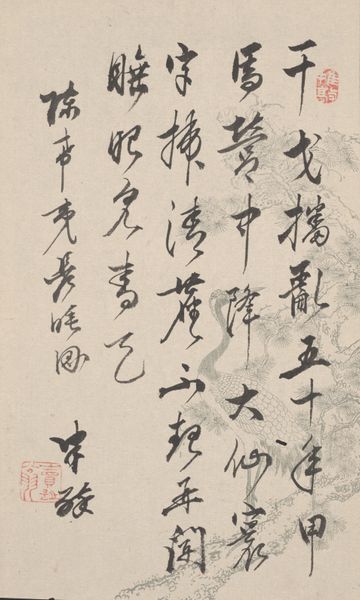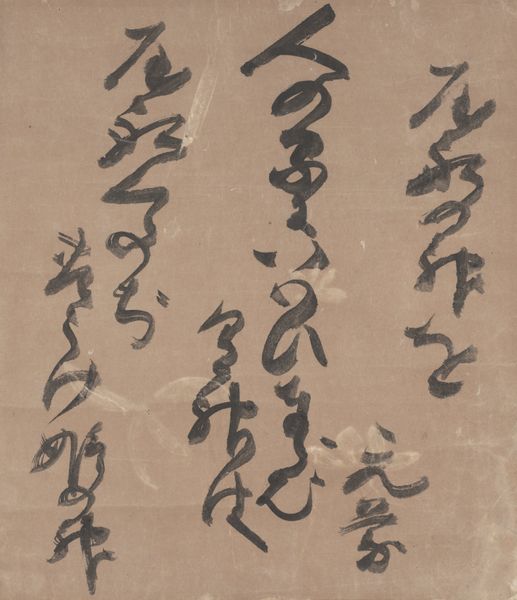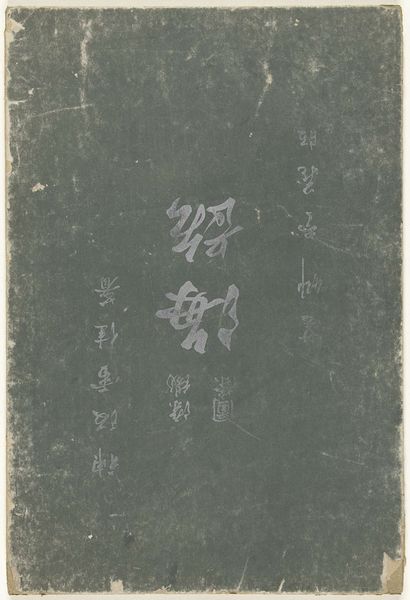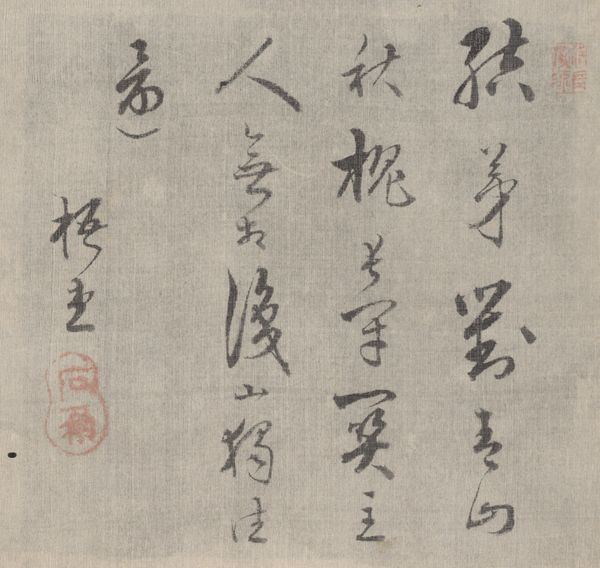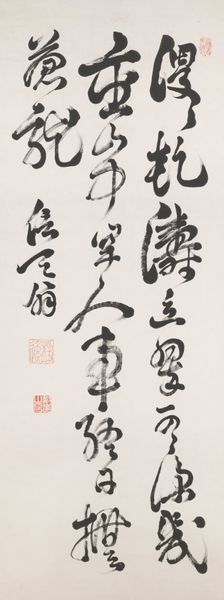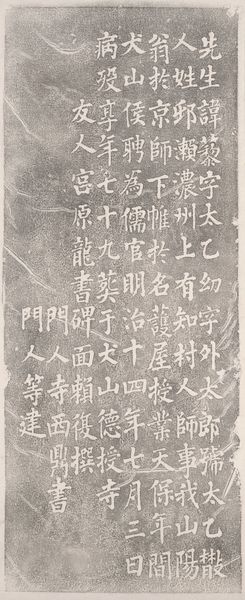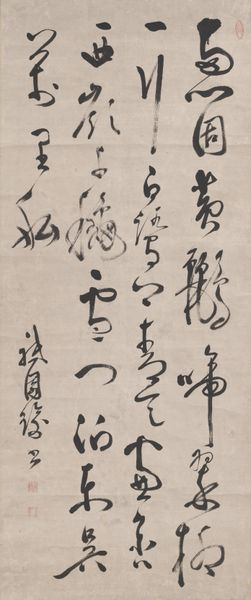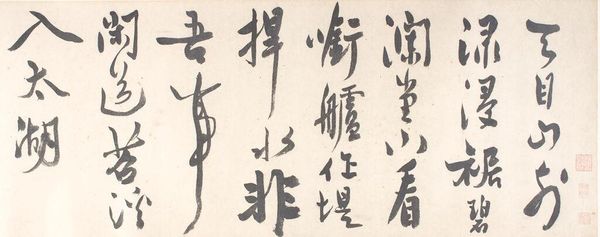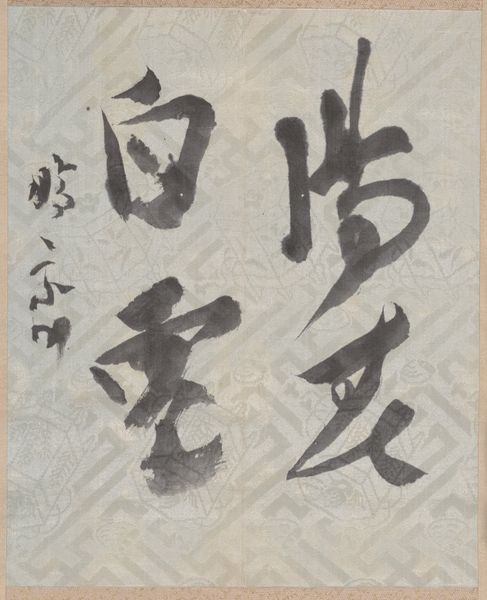
Autumn Poem in Cursive Script c. early 19th century
0:00
0:00
drawing, paper, ink-on-paper, ink
#
drawing
#
asian-art
#
japan
#
paper
#
ink-on-paper
#
ink
#
orientalism
#
abstraction
#
line
#
calligraphy
Dimensions: 50 15/16 × 14 13/16 in. (129.38 × 37.62 cm) (image)79 3/4 × 20 3/8 in. (202.57 × 51.75 cm) (mount, without roller)
Copyright: Public Domain
Curator: Here we have Rai San’yō’s “Autumn Poem in Cursive Script,” an ink on paper drawing created in the early 19th century. It’s part of the collection at the Minneapolis Institute of Art. Editor: It feels…meditative. The verticality, the stark contrast between the ink and paper – it draws you inward. I wonder what message this artist was trying to convey in particular? Curator: Rai San'yō, living through a time of social and political change in Japan, often used his art and poetry to express his feelings about the world around him. Calligraphy, especially, held a significant place as an art form intertwined with personal and political expression. This work could be read in conversation with contemporaneous national identity movements. Editor: Absolutely. How fascinating that even the *form* of the characters themselves can hold such layered meaning! How might audiences have encountered this piece? I am wondering about its accessibility and relationship to Japanese literati culture. Curator: Pieces like this would likely have been displayed in private homes or studios, spaces where intellectual exchange and artistic appreciation flourished among the literati class. So, yes, likely very insular audiences who had deep and sustained engagements with calligraphy as an art form and political message. Editor: And thinking about “orientalism," I am curious how Western audiences might view and interpret such artwork divorced from its original historical and social setting. How has the West affected our understanding of Japanese Art History? Curator: Exactly. Are we approaching it with an understanding of the cultural values and aesthetics embedded within, or are we imposing our own preconceived notions of beauty and meaning? The very act of displaying this in a Western museum alters its significance. Editor: Yes, it’s a reminder that meaning is never fixed; it’s always negotiated. Curator: This is a valuable discussion, it helps contextualize Japanese calligraphic art in new, expanded directions, even across centuries and different societal contexts. Editor: Agreed, understanding artwork requires continuous critical thought and acknowledgement of the politics of seeing.
Comments
No comments
Be the first to comment and join the conversation on the ultimate creative platform.
